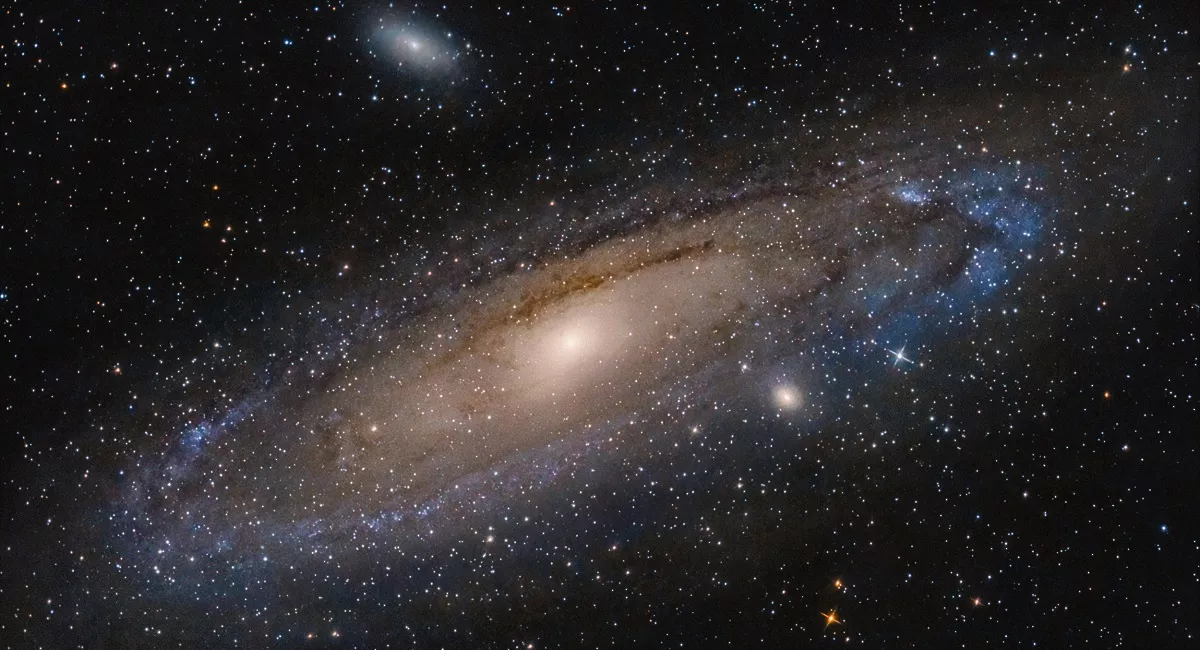
Are you ready to dive into the fascinating world of Hubble’s Law? Strap on your space helmets and get ready to explore the universe with this mind-blowing discovery. Hubble’s Law is a fundamental concept in astrophysics that revolutionized our understanding of the cosmos. Named after the renowned astronomer Edwin Hubble, this law describes the relationship between the distance of galaxies from Earth and their recession velocity.
In this article, we will uncover 12 intriguing facts about Hubble’s Law that will take you on a cosmic journey from its discovery to its far-reaching implications. We’ll explore how this law provides evidence for the expansion of the universe, delve into the speed of galaxies, and even touch on its connection to the Big Bang theory. So, let’s prepare for an astronomical adventure and uncover the secrets of Hubble’s Law!
Key Takeaways:
- Hubble’s Law shows that the universe is expanding, and it helps us understand how galaxies are moving away from each other as space stretches. It’s like the universe is getting bigger and bigger!
- By using Hubble’s Law, scientists can figure out how old the universe is and learn about its early conditions. It’s like a cosmic time machine helping us explore the history of the universe!
Hubble’s Law revolutionized our understanding of the universe.
Hubble’s Law, named after the renowned astronomer Edwin Hubble, describes the relationship between the distance of galaxies and their recessional velocity – a fundamental concept in cosmology.
It provides evidence for the expansion of the universe.
Hubble’s Law supports the idea that the universe is constantly expanding, suggesting that galaxies are moving away from each other as space itself stretches.
The law is based on the observation of redshift.
Redshift is a phenomenon where light from distant galaxies shifts towards longer wavelengths, indicating that those galaxies are moving away from us. Hubble’s Law uses the redshift measurements to determine the recessional velocity of galaxies.
The law is expressed by a simple mathematical formula.
The mathematical formula of Hubble’s Law is v = H0 * d, where v is the recessional velocity of a galaxy, H0 (Hubble constant) is the rate of expansion of the universe, and d represents the distance of the galaxy.
Hubble’s Law led to the estimation of the age of the universe.
By using Hubble’s Law, scientists have been able to estimate the age of the universe to be approximately 13.8 billion years, giving us valuable insights into the timeline of cosmic evolution.
The Hubble Space Telescope played a crucial role in refining Hubble’s Law.
With its precise measurements of redshift and distance, the Hubble Space Telescope has contributed significantly to the refinement of Hubble’s Law, enhancing our understanding of the expanding universe.
Hubble’s Law supports the Big Bang theory.
The observed expansion of the universe, as described by Hubble’s Law, aligns with the predictions of the Big Bang theory – the prevailing cosmological model explaining the origin and evolution of the universe.
Hubble’s Law is applicable on large scales.
While Hubble’s Law holds true when observing distant galaxies and clusters, it becomes less accurate on smaller scales, such as within galaxies, where other factors like gravitational interactions come into play.
The Hubble constant is still a subject of active research.
Scientists continue to refine the value of the Hubble constant to obtain more accurate measurements of the universe’s expansion rate, leading to ongoing debates and research in the field of cosmology.
Hubble’s Law supports the concept of an expanding fabric of space.
According to Hubble’s Law, the velocity at which galaxies are receding is proportional to their distance from us, indicating that space itself is expanding and carrying galaxies along with it.
Hubble’s Law allows us to infer the early conditions of the universe.
By extrapolating the observations made using Hubble’s Law, scientists can gain insights into the state of the universe in its early stages, including its density, temperature, and rate of expansion.
Hubble’s Law continues to shape our understanding of the cosmos.
Hubble’s Law remains a cornerstone of modern cosmology, providing a foundation for further discoveries and theories about the nature, origin, and evolution of the universe.
Conclusion
Hubble’s Law is a fundamental principle in astronomy that has revolutionized our understanding of the universe. It provides valuable insights into the expansion of the cosmos and the origin of galaxies. Through the work of Edwin Hubble and subsequent advancements in technology, we have been able to gather fascinating data that has shaped our cosmological theories.
From the discovery of the redshift phenomenon to the formulation of the Hubble constant, this law has paved the way for numerous astronomical breakthroughs. By studying the relationship between the distance to galaxies and their recessional velocity, scientists have been able to estimate the age and size of the universe.
Understanding Hubble’s Law allows us to grasp the vastness and dynamic nature of the universe we live in. It ignites curiosity and inspires further exploration, as we continue to unravel the mysteries of the cosmos.
FAQs
1. What is Hubble’s Law?
Hubble’s Law is a principle in astronomy that states that the farther a galaxy is from us, the faster it is moving away from us. This suggests that the universe is expanding.
2. Who discovered Hubble’s Law?
Hubble’s Law was discovered by the American astronomer Edwin Hubble in the 1920s. He observed a correlation between the distances to galaxies and their redshift, indicating their recessional velocities.
3. What is redshift?
Redshift refers to the elongation of light waves emitted by celestial objects towards the red end of the spectrum. It is a result of the Doppler effect and indicates that galaxies are moving away from us.
4. How was Hubble’s Law formulated?
Hubble’s Law was formulated by plotting the recessional velocities of galaxies against their distances. The slope of this graph, known as the Hubble constant, provides an estimate of the rate at which the universe is expanding.
5. What is the significance of Hubble’s Law?
Hubble’s Law has revolutionized our understanding of the universe. It has allowed scientists to estimate the age and size of the cosmos, explore the concept of the Big Bang, and study the evolution of galaxies.
6. Is Hubble’s Law still valid?
Yes, Hubble’s Law is still considered a valid principle in astronomy. Its validity has been reinforced by subsequent observations and measurements, as well as advancements in technology.
7. How does Hubble’s Law relate to the expansion of the universe?
Hubble’s Law suggests that the universe is expanding, as galaxies are moving away from each other. By studying the relationship between the distance and velocity of galaxies, scientists can estimate the rate at which the universe is expanding.
Was this page helpful?
Our commitment to delivering trustworthy and engaging content is at the heart of what we do. Each fact on our site is contributed by real users like you, bringing a wealth of diverse insights and information. To ensure the highest standards of accuracy and reliability, our dedicated editors meticulously review each submission. This process guarantees that the facts we share are not only fascinating but also credible. Trust in our commitment to quality and authenticity as you explore and learn with us.


